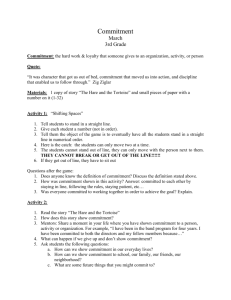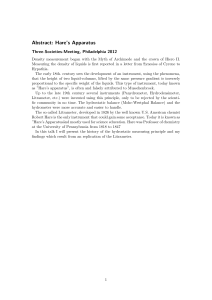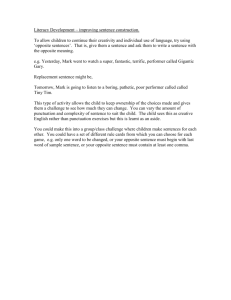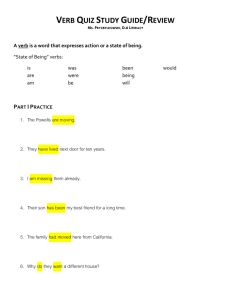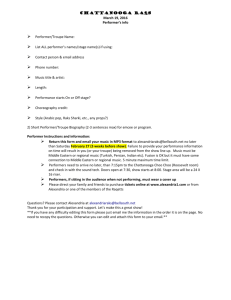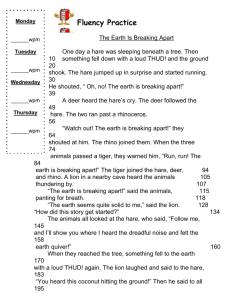May 30, 2008 PHY2053 Discussion Quiz 2 (Chapter 2)
advertisement
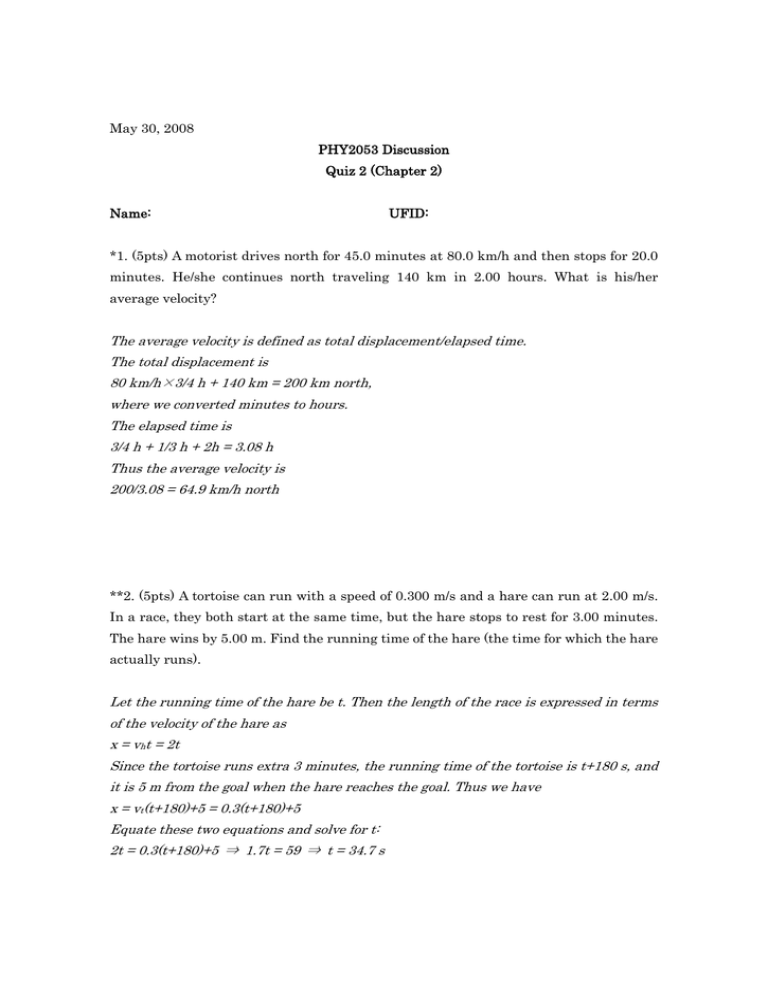
May 30, 2008 PHY2053 Discussion Quiz 2 (Chapter 2) Name: UFID: *1. (5pts) A motorist drives north for 45.0 minutes at 80.0 km/h and then stops for 20.0 minutes. He/she continues north traveling 140 km in 2.00 hours. What is his/her average velocity? The average velocity is defined as total displacement/elapsed time. The total displacement is 80 km/h×3/4 h + 140 km = 200 km north, where we converted minutes to hours. The elapsed time is 3/4 h + 1/3 h + 2h = 3.08 h Thus the average velocity is 200/3.08 = 64.9 km/h north **2. (5pts) A tortoise can run with a speed of 0.300 m/s and a hare can run at 2.00 m/s. In a race, they both start at the same time, but the hare stops to rest for 3.00 minutes. The hare wins by 5.00 m. Find the running time of the hare (the time for which the hare actually runs). Let the running time of the hare be t. Then the length of the race is expressed in terms of the velocity of the hare as x = vht = 2t Since the tortoise runs extra 3 minutes, the running time of the tortoise is t+180 s, and it is 5 m from the goal when the hare reaches the goal. Thus we have x = vt(t+180)+5 = 0.3(t+180)+5 Equate these two equations and solve for t: 2t = 0.3(t+180)+5 ⇒ 1.7t = 59 ⇒ t = 34.7 s ***3. (5pts) Two stones are thrown vertically 1.00 s apart from the top of a building. The first stone is thrown downward with an initial speed of 2.00 m/s. 1.00 s later, the second stone is thrown downward with a speed of 20.0 m/s. The two stones hit the ground at the same time. Find the height of the building. Let t be the time the first ball takes to reach the ground, then we have Δy = v0t-(1/2)gt² = -2t-4.9t² The second ball needs one second less to reach the ground, thus Δy = v0’(t-1)-(1/2)g(t-1)² = -20(t-1)-4.9(t²-2t+1) = -4.9t²-10.2t+15.1 Equating these two equation, we solve them for t: -2t-4.9t² =-4.9t²-10.2t+15.1 ⇒ 8.2t = 15.1 ⇒ t = 1.84 s Plugging in the result in the first equation, we have Δy = -2×1.84-4.9×1.84² = -20.3 m Thus the height is 20.3 m. **4. (5pts) A stunt performer on a tree limb drops vertically onto a horse galloping under the tree. The performer is initially 4.00 m above the level of the saddle. The horse initially gallops at 6.00 m/s, and the moment the horse sees the performer make his/her move it begins to accelerate at 3.00 m/s². What is the horizontal distance between the saddle and the limb when the performer makes his/her move if the performer successfully lands on the horse? The flight time of the performer is Δy = -(1/2)gt² ⇒ t = √(2×4/9.8) = 0.904 s Since the horse accelerates at 3 m/s when the performer is falling, the horizontal displacement of the horse is Δx = v0t+(1/2)at² = 6×0.904+(1/2)×3×0.904² = 6.65 m
